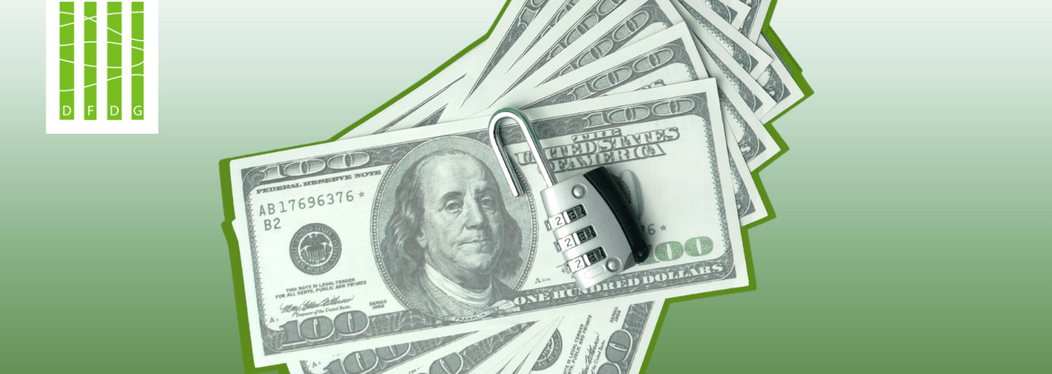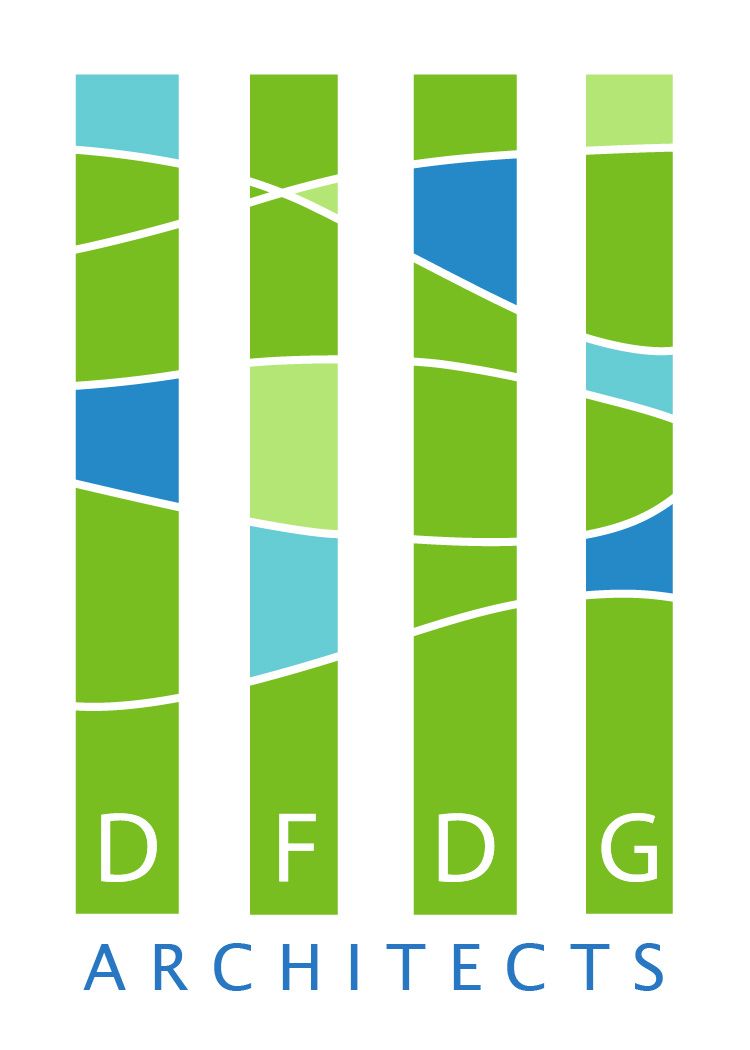
In our experience, clients who understand how to work with an architect enjoy the process more and move through it in a smoother fashion than those who don’t.
Why? Because they know what questions to ask, what the process will look like, and what they’re paying for.
They’re also more likely to get what they want in the end.
The problem is, if you've never worked with an architect before, you likely have many questions and no one to answer them.
What’s the whole process like? What role does the architect play? What role do I, as the client, play? Do I really need to work with an architect? How do I work with an architect?
Undertaking any type of construction project is a daunting prospect. It can be a long-term journey with many unknowns, especially if you are going through the process for the first time.
Keep reading as we explore how to work with an architect to help you understand the entire process, answer your questions, and ease your concerns.
In this article we will be:
- Showing you why you should hire an architect
- Clarifying what you should look for in an architect
- Explaining the role of an architect and their responsibilities
- Talking about the risks of hiring the wrong architect
- Describing the typical five phases of a project as outlined by the American Institute of Architects (AIA)
Why Do You Need An Architect?
Working with a registered architect is important for several reasons, but here are the four key reasons why you need an architect:
- Get creative solutions for your unique project
- Make informed decisions and avoid mistakes
- To be your advocate and guide through a process that can be long, confusing, and stressful
- Save money in the long run
Let’s look at each of these reasons in more detail:

Get creative solutions for your unique project.
Many people struggle to create unique, functional, and beautiful designs without working with an architect.
The truth is, architects are design experts, and your architect can help you think flexibly to solve complex problems using innovative design solutions, and fully personalize your project around your unique taste and style.
“When I’m working on a problem, I never think about its beauty, I just think about how to solve the problem, but when I finish it, if the solution is not beautiful, I know it’s wrong.”
- R. Buckminster Fuller, Architect

Make informed decisions and avoid mistakes.
A registered architect must attend at least 6-7 years of education and complete a program at an accredited school of architecture to obtain their degree. Once they have worked for several years under established registered architects, they’re able to take the litany of exams (no less than six!) required to practice as an architect and become registered themselves.
Architects are trained to a very high standard. They study everything from building science to structural engineering, building codes to site analysis and planning—passing this expertise on to you. At DFDG, our consideration of health, safety, welfare issues, and stewardship of our planet are at the core of our creativity and processes.
Check out BalanceCareers to learn more about an architect's educational requirements and the role we play in your project.

To be your advocate and guide through a process that can be long, confusing, and stressful.
Your architect will help you understand the realities and possibilities of every phase of your project, from initial consultation to project feasibility and proposed design options to construction.
They help you solve issues before they become major problems and make smart, informed decisions based on experience-backed guidance and insights.

Save money in the long run.
The value that an architect offers far exceeds the nominal fees you’ll pay for their service. At DFDG, we guide you through the entire design process, helping you avoid mistakes and higher construction costs by getting the design right on paper first, and by making the best use of your budget.
We work hand-in-glove with your contractor from the early design sessions to check and manage costs, long-lead items, specialty consultants, review options and alternatives, all with the intent of placing you in control of your budget.
What Is the Role of The Architect?
Registered architects are responsible for developing detailed documents and drawings for new-build projects and remodels to meet your functional and stylistic needs.The documents and drawings produced by the architect will be used by your Contractor to ultimately construct the building.
Architects use expertise to design buildings that both look good and make the best use of space, lighting, and materials for your needs, wants, and budgets.
For 95% of our projects, our client's list of needs and desires exceeds their budget. People feel sheepish about that, but I always tell them that it’s perfectly normal.
This is why we have a process to work this out. If you have to give up on something, I’d rather you gave up on it early, than be in love with something all the way to the end when you are finally told no, you can't have it.
- Damian Farrell, Principal & Founder, DFDG
Architects also observe the construction process. DFDG acts as your advocate, ensuring that the original design intent is carried out and that standards of craftsmanship and quality are maintained. We also work with contractors to resolve any issues that may arise during the construction phase.
6 Possible Pain Points During the Process

In almost every project there will be pain points that come up—some small and some bigger.
A good architect will be doing what they can to mitigate these problems as they see them coming. They will communicate with you every step of the way to prevent some of the most common pain points. You should notice them doing extra things like thinking ahead about material delays.
Unfortunately, a good architect can’t stop every problem. Sometimes things happen that are out of our control—like a pandemic.
The 6 most common pain points on projects are:
- Paying more for a project that goes over budget
- Waiting a long time for your dream home due to delays
- Spending too much time on design revisions
- Finding it difficult to make informed decisions
- Feeling like your opinions aren’t important
- Ending up with a space that reflects the architect’s vision more than your own
Some of these pain points are of the client’s own making. A good architect will also let you know when you are getting in the way of your dream home. They should then help you overcome whatever is getting in your way.
And if they can’t prevent a problem from happening, a good architect will be with you every step of the way as you work around that hurdle.
Six Questions to Ask Your Architect (or Yourself) Before Hiring Them

When seeking out an architect to hire for your project, here are six questions to ask your architect or yourself. These six questions will help you determine if a particular architect is a good fit for you.
How and how often will the architect communicate with you?
You are looking for an architect who will be communicating often and early. If problems come up, they should be communicating that to you first thing.
If your architect takes too long to respond, you lose momentum in the project and important details get lost.
Do they include everyone in communication about the project?
If your architect keeps everyone involved in your project in the loop, you won’t have to worry about key decision-makers missing important details.
What is their process for gathering your information, wants, and needs?
They should constantly be asking questions to see how you feel about every detail, decision, and step in the process.
If you trust your architect and see how invested they are, making decisions is easier, because you know they have your best interests at heart.
Can they provide testimonials, examples of previous projects, and their credentials?
Your architect should be able to show you examples of previous projects, testimonials, and credentials. This shows they have relevant experience and proves their credibility.
Do they repeat your language back to you?
You should be able to have an open, collaborative dialogue with your architect at all times so you feel comfortable talking about what you like or don’t like.
When talking to the architect, ask yourself if you hear them repeating your language back to you. This is a sign of good listening skills.
This trait also shows that they are looking at things from your perspective. For example, if you show your architect a photo of a living room and tell them you want something cozy in the same way, even if that architect wouldn’t call that same setup “cozy”, they should be attempting to redefine the word “cozy” to look like your definition.
Do they make you feel comfortable and relaxed?
If your architect doesn’t make you feel relaxed, you might find it difficult to voice your boundaries and needs. You'll work closely with your architect over an extended period of time, so having a good rapport with them is important.
Answering these six questions can help you feel confident that you’ll be able to develop a great working relationship with your architect that will benefit you both throughout the project, keep things running smoothly, and ensure you get everything you wanted, and more!
I think what clients should look for early on is that your architect really listens and pays attention. And that they're not just doing the interview process as a courtesy to you. You want to know that the ideas and thoughts that you have are going to show up, right?
The most important thing is knowing you're not going to get to the end and say, ‘Wait. This is so far from what we originally talked about at the beginning.’ You want to have confidence that your architect has your goals top of mind and that they’re not just interested in doing their own thing.
- Damian Farrell, Principal & Founder, DFDG
What The Process Is Like for Architectural Services
Providing architectural services isn't just about drawings and designing blueprints. Architects go through a comprehensive, time-consuming, and detailed project process.
Your architects often carry out a lot of this work in the background, between your design and revision meetings and their meetings with external consultants.
While you might not be a part of every meeting or design session, you should feel included. You should get regular updates on progress and your architect should get your input on most decisions.
You shouldn’t feel lost or out of control.
At the end of the day, the process will probably feel intense, but should also be fun.
We make it fun. You can't survive an intense process by being serious all the time. The work is serious, but the process and discussions should be fun.
- Damian Farrell, Principal & Founder, DFDG
What Are the Architect’s Responsibilities?
You'd be surprised at the broad scope of responsibilities architects undertake to design a safe, sustainable, functional, and aesthetically pleasing building.
Every architect will provide different services depending on their skill sets and experience. However, most architects will help you by:
- Developing the building design
- Preparing 2D and 3D images and renderings
- Creating safe buildings that promote wellness
- Conducting site surveys
- Conducting feasibility studies
- Developing design briefs
- Coordinating with consultants
- Creating construction documents
- Managing construction costs in the team environment that includes you, as the client, and your contractor
- Collaborating with interior designers, landscape architects, and other design professionals
- Adhering to building regulations
- Adhering to zoning and building codes
- Applying for planning and any zoning approvals if necessary
The AIA Five-Phase Approach Most Architects Follow

1. Schematic Design
During the schematic design phase, we will investigate design solutions for your renovation or new construction project and begin the process with rough diagrams and sketches. We then develop these into more detailed investigations of forms and spaces to inform the general scheme.
At this time, architects consider your building site, budget limits, building code constraints, and feasibility studies to create a design that best meets your goals. In the schematic design phase, architects problem-solve and continue to refine your design following your feedback from design meetings.
Explore Life Of An Architect's article about sketching during the schematic phase to learn more.
You'll receive general floor plans, building elevations, and a depiction of the general scope, scale, and relationship of every element in your project. Drawings at this time typically provide enough information for a contractor to give you a “ballpark” opinion of the probable cost of construction.
You may already have a contractor in mind, which is largely for your own benefit!
Based on over 30 years of experience designing new homes and remodeling older homes, we strongly feel that they should be brought on to the team as soon as possible! Having a good contractor on board from the beginning is critical to a successful process and outcome.
The top benefit to working with the contractor at several points in the design process is that we architects are able to cross-check the project’s cost with the design and scope of work. This is critical to getting us as close as possible to a linear—not zigzag—process.
To read more about why we recommend bringing the contractor on early in the project, read our memo The Role of The Contractor in our Projects.
2. Design Development
During the design development stage, architects refine your drawings even further based on your previous revision meetings and continued exploration of the possibilities of your project.
This is the stage where architects might begin collaborating with an interior designer to select final finishes, materials, lighting fixtures, built-in fixtures, etc. and to work with a landscape architect in coordinating concepts for landscape and exterior living spaces.
The design development phase gives the contractor a more fleshed-out view of the final design, so they can give you a more accurate cost estimate. This is also the stage where architects begin to coordinate structural, mechanical, plumbing, and electrical systems into the design drawings and construction costs.
Design development drawings include the final designs for the project with floor plans, elevations, and any cross-sections and sketches necessary to depict the character and scope of your project.
3. Construction Documents
Next, architects create a set of construction documents that detail the scope of work and all dimensions, material specifications, and requirements for the project, including notes and instructions for specific elements of your design, to make it clear to your contractors what they need to achieve.
Drawings and specifications from any external technical consultants such as structural engineers will be included in the construction documents. The contractor will submit these finished construction documents to your local building department as part of the application for a building permit.
Check out Monograph’s article to learn more about construction documents.
4. Bidding
The bidding phase is primarily for large commercial or institutional projects. For residential projects, your contractor will have obtained bids from their subcontractors at the end of the design development process. They compile all of the estimates and give you a construction cost, which is typically the basis of your construction agreement with them.
5. Construction Administration
Once you've been given approval and received a building permit from your local authorities, it's time for construction to finally begin!
At this time, your architect will still be involved in the project process to ensure the best possible result and act as your eyes and ears during construction.
These architectural services include:
- Site visits to check construction progress
- Troubleshooting any unforeseen issues
- Ensuring consistency with our designs
- Monitoring construction schedules
Do All Architects Follow the Same Process?
The five phases of design are thorough for a reason: It works, leaves nothing falling through the cracks, and provides the information everyone needs to design a beautiful property.
While most architects do follow the AIA five-phase approach to some degree, many architects develop their own set of processes that work for their clients and their own ways of working.
Many approaches to the design process can work. The most important thing is that the architect has a procedure that they follow.
Having no set approach is a headache waiting to happen. You can end up with a poorly designed building, issues with getting estimates from contractors, and problems with securing building permits.
A good architect will be organized about their approach and explain the process to you at some point early in the project.
Want To See What Working with An Experienced Architect Is Like?
We hope this blog has given you a little more insight into the whole process us architects follow and what working with an architect is actually like. Now you'll have more confidence and clarity going into your first design meeting with an architect and know what to expect at every stage of the design cycle!
At DFDG, we've been enhancing the way people experience buildings and interiors for over 30 years. Our superpower lies in creating simple solutions to complex challenges and designing buildings that last a lifetime and enrich the human experience. If you'd like to learn more about our process or talk to our architects about an upcoming project, please get in touch.
Watch More Videos

DFDG Architects
359 Metty Drive | Suite 4a
Ann Arbor | Michigan | 48103
Phone: 734.998.1331 Email: contact@dfdgonline.com
Licensed in Michigan, Ohio, Illinois, Idaho, Missouri, New Jersey, Connecticut, and Florida

All digital content.

